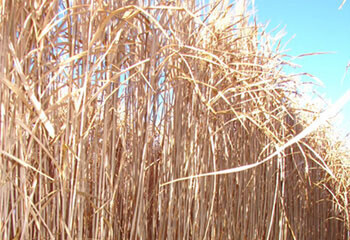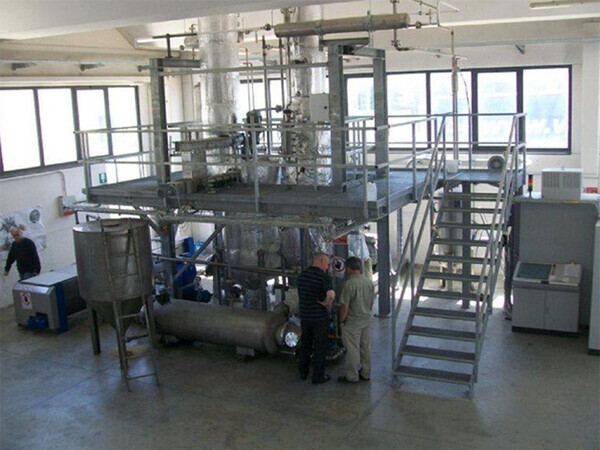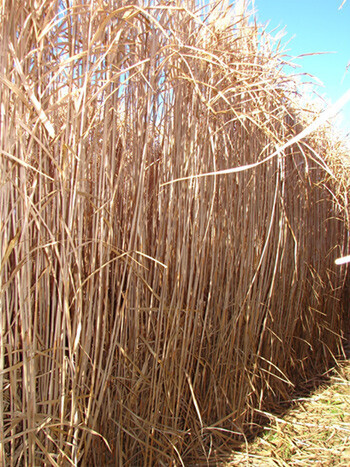An American colleague of mine who is involved in Miscanthus research and teaching said to me some time back that development of a Miscanthus industry is a business that takes quite some time to get going. For somebody as impatient as I am, it was frustrating to hear that, but she is quite right. So far this season, there has been considerable interest from a large number of different people who are interested in establishing Miscanthus as a trial to “see how it goes in their area”. That is really good and it spreads the ownership of Miscanthus over a large number of people – avoiding any possibility of monopoly ownership situations developing. However it can be a bit frustrating for anybody who already has confidence in the ability of Miscanthus to handle a wide range of climates and soils in New Zealand, and who also has identified multiple end use opportunities.
We are progressing well with sales targets for this season, but we still have plants available should we get further orders of any size. Even though we have had good success in planting Miscanthus during the summer in Hawkes Bay, we have concluded that it is probably best to set Christmas as the cut-off date for planting. Having said that, I am seriously considering using a very visible public site to grow a demonstration planting of Miscanthus with part of it being used to trial time of planting so that people can see what difference it makes.
In the past month or two, a lot of our focus has been on what is effectively a side business, which is the establishment of renewable diesel plants in New Zealand. Miscanthus New Zealand Limited was approached some time back by an American company called REEP Development LLC (REEP), which is half owned by a Kiwi, to see if we would be interested in use of Miscanthus through their proprietary process to make renewable diesel. This relationship has been developed over the last two years and is now getting very close to fruition with several companies and individuals interested in the possibility of establishing such a renewable diesel plant in their area.
This is very exciting technology partly because it takes cellulosic material such as Miscanthus, or sawdust, or wood chips, or cereal straw, and processes it directly into diesel which is a direct equivalent of mineral diesel and meets the existing mineral diesel specifications. It has even been approved in California where the regulations for such things are much stricter than in most other places in the world. But what makes it most exciting is the scale. It can be applied successfully on a scale that is small enough that it requires only 12 tonnes of dry matter per day as the feedstock. This an order of magnitude or two less than most other such biofuel production plants. It means that a trucking firm with access to this amount of biomass on an ongoing basis – 84 tonnes of dry matter per week – can set up such a plant in their yard and can produce just over 1 million litres of diesel per year, which is enough diesel to fuel 16 trucks – based on assumed logging trucks fuel consumptions.
In addition, REEP can arrange for 85% of the capital cost to be financed through a US government bank meaning that a New Zealand company could set up such a plant with a total outlay of only around $500,000 and a favourable five-year US government loan of approximately $1.6 million (NZ dollars). And the really wonderful thing is that with a healthy price of $100 per tonne of dry matter being paid to the grower (of Miscanthus) or the supplier (of the sawdust) – and with a diesel price of only $1.10 per litre (plus GST), the renewable diesel plant can pay off its loan and make a profit.
Biomass to Renewable Diesel Demonstration Plant – Italy
Design – 150Litres (40gal) /hour
Power unit – Diesel generator. Diesel use – Local truck transport fleet.
This may not seem to be very much on the subject of Miscanthus, but it is part of the wide-ranging work that we have been doing to establish real viable alternative end uses that will enable people to grow Miscanthus with confidence knowing that they have more than one potential or actual local outlet for the product that they will produce. And one of these plants could be run using no more than 200 ha of Miscanthus – something that is very achievable in most parts of New Zealand. I will periodically update things regarding progress in this field. If you wish to get in touch in relation to this, use the contact form on the website.
Hawkes Bay Miscanthus – end of third growing season.
We are also right on the point of harvesting a significant area that is at the end of its second growing season. Part of this product will be used directly by the landowner as boiler fuel and part of it will be used for trials of a new in-field pellet machine that produces chunky pellets – 30 mm square – directly from the harvested material as it is being harvested. This will improve the transport cost significantly by creating a product that is denser to transport. The same contractor has a mechanical planter almost completed that will cultivate strips, plant Miscanthus plants automatically and possibly also spray for residual weed control at the same time.
It is really great to see such positive Kiwi innovation and lateral thinking being applied to issues that arise with a new industry such as the development and use of Miscanthus. We have also been having some fairly intensive discussions with key people at Lincoln University, who are already starting to attack several of the research issues that growing and utilisation of Miscanthus generate. If we can get the powers-that-be in the government funding agencies to recognise the value that can be created by encouraging development and use of Miscanthus, there will be sufficient research that needs to be done to keep many people occupied productively for their whole careers.





